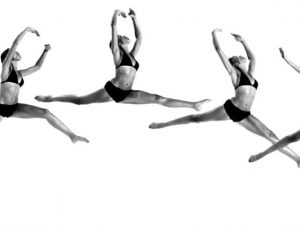
As a dancer, your body is your tool, your instrument, your livelihood, your passion and your constant collaborator. This is why it is so important for dancers to have a well-rounded working knowledge of their anatomical structure, limitations, and unique peculiarities. Every BODY is different, and comes with its own set of gifts and obstacles. And while technique and training can mould and shape the body, it can only go as far as the body’s natural, physical capacity.
With that being said, it is not really practical to expect dancers to be anatomy experts, but all dancers should have a good frame of reference when it comes to their anatomy. It ought to be a basic foundational aspect of dance training, and dance teachers especially should be able to instruct within safe, anatomically correct perimeters. To that end, this series of articles will focus on building a solid, easy to use, method for communicating anatomical concepts and creating a dialogue between dancers and their bodies.
So with this open-minded, no-fear approach to learning, one of the first, and biggest hurdles is to simply engage people in the LANGUAGE of anatomy. “Anato-speak” is really like learning a new language, but once you master a few basics, the complex words and phrases that sounded so foreign suddenly start to make a whole lot more sense. In essence, learning to speak this language is simply a far more articulate way of describing the body’s geography … so lets look at a few examples.
LATERAL AND MEDIAL: This might seem obvious to some people, but for many it might be an eye-opener. Whenever you see the words “Lateral” or “Medial”…it is a like a direction marker. If you drew a line down the middle of your body so you looked like a half-n-half, this would be your “mid-line.” Now imagine you are standing with your arms at your sides. Which is closer to the “mid-line,” your right hip or your right elbow? The hip is closer…and therefore “Medial” while the elbow is “Lateral.” See? Not so confusing!! OK now, lets look at your RIGHT knee joint. You have two ligaments on either side of the knee joint that keep your bones in place. The one on the right side of your knee is called the “Lateral Collateral Ligament.” The one on the left side of your RIGHT knee is called the “Medial Collateral Ligament.” Now that we know this, when someone says “laterally rotate in the hip joint” a light bulb appears…hmmmmm, this is what dancers commonly refer to as “turning out!” As Oprah says, “this might be an Ah Ha moment” for you. The idea is not to suddenly become an anatomy expert overnight…but little by little we can start to talk about our body in a more articulate way, move past the fear and discomfort of “Anato-speak,” and enjoy a deeper understanding of what is really going on underneath our skin!
ANTERIOR AND POSTERIOR: Your nose is anterior and the back of your head is posterior. Your chest is anterior and your spine is posterior. Your toes are anterior and your heels are posterior. Anterior refers to a body part that is closer to the front of the body, while posterior refers to a body part that is closer to the back. Many times we use this term to compare body parts under the skin. For example, your collarbone is closer to the front than your shoulder blade…so in “Anato-Speak” we might say “your clavicle is anterior to your scapula”…try saying this sentence out loud and simply understand that this is a more articulate, anatomically correct way to describe your own body.
PROXIMAL AND DISTAL: The human body can be divided into two main entities…the Axial body(head, torso, pelvis) and the Extremities(hands, arms, hips, legs, feet)…This pair of “Anato-terms” only applies to the extremities. When a body part is proximal, it means that it is closer to the axial body, while something that is distal is further away. Your hand is further from your axial body than your elbow joint…so in “Anato-speak” we would say, “your hand is DISTAL to your elbow joint.” How would you compare the position of your knee-bone to your anklebone in “Anato-speak”? The answer is at the bottom of this article!!!
FRONTAL, SAGITTAL, TRANSVERSE PLANES: We are going to imagine two large plates of glass. If we pressed one against our face and chest, and another against our back, we would look like a dancer sandwich between two windows of glass. Any movement we could do to the between these plates of glass, to the side, or above our head, would be considered “Frontal Plane” movements. Now if we moved the glass to touch our right shoulder and left shoulder, we would look like a dancer in a very narrow glass hallway. Any movement we could do to the between these plates of glass, to the front, or to the back, would be considered “Sagittal Plane” movements. Finally, if took one of those plates and cut a hole in the middle, wiggled through the hole and rested the window around our waist, we would look like a dancer popping up through a glass table! Any twisting, turning, revolving side to side movements along the surface of this glass table around us would be called “Transverse Plane” movements.
Over the next few weeks and months, we will gradually look at more and more terms and concepts. By continuing to add to our “Anato-vocabulary,” we will start becoming much smarter, educated dancers. For now, see if you can start to incorporate the terms we looked at today into your teaching and choreographing. When you do an arabesque to the back, realize that your body is working in the SAGITTAL plane. A pirouette is a perfect example of movement in the TRANSVERSE plane. If you feel pain in your ankle, ask yourself if it is on the LATERAL or the MEDIAL side. By practicing your “Anato-speak” on a regular basis, you will begin to communicate in this wonderful new language with increased confidence and ability. CHEERS TO YOUR HEALTH AND EDUCATION…
ANSWER TO QUIZ: “your patella is proximal to your maleolus”













